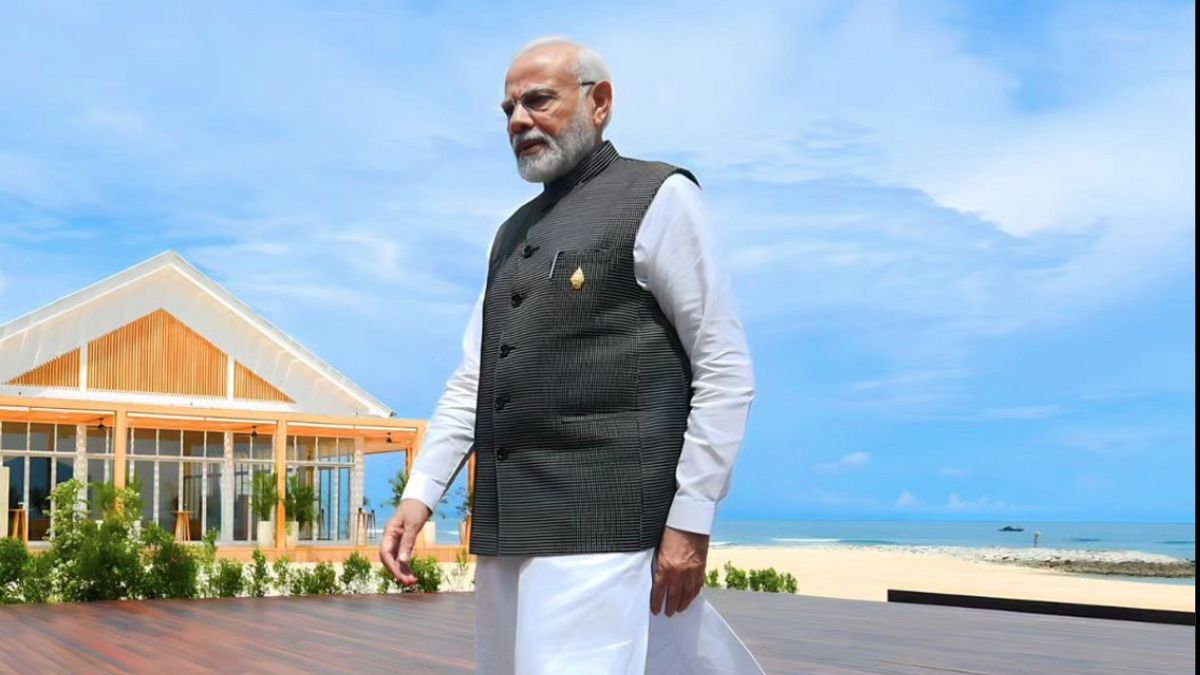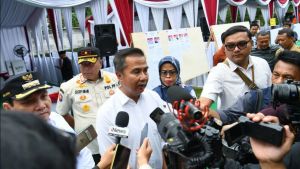JAKARTA - On Wednesday evening, August 23, 2023, Chandrayaan-3, finally successfully landed at the south pole of the moon. All of the Indians are soluble in joy and great pride.
Now, India is the fourth country in the world after the United States, the Soviet Union, and China successfully landed a space mission on the moon.
The continent's children were also included in the elite ranks of countries that explored space.
As reported by ANTARA, the success was even more special a few days earlier, the Russian space mission failed to do the same on the moon.
The success itself made India's global color even brighter, after in various global theaters, from the economy to politics, the South Asian country scored various impressive advances.
They are no longer seen by inferiors from their neighbor who is also a populist and determines the current global trend, China.
The two countries can be called "fremies", acronyms from "friends" (friends) and "enemy" (enemy). India and China are unique, friendly but hostile, or at least friends but competing fiercely in many areas of life.
The two are keen to build a new world order that revises the order of international relations that the West has defined so far.
However, at the same time they continue to compete in all mandala, to armed clashes due to border problems that have not been resolved until now.
Their "Frenemy" is becoming increasingly a condition when the world's geopolitical conditions and tensions have led to a hidden war involving a large force called a number of Chinese officials as indications towards a "New Cold War."
Ironically, the fiercest fighting in a Cold War-like atmosphere is China itself and the United States.
However, in the next few years, India could burst amid a fierce multispectrum competition between the United States and China.
But make no mistake, even though he currently tends to be close to the United States and the West, India refuses to enter into the orbit of anyone, be it the United States, or Russia who is India's loyal partner, or anyone else.
The Association of Southeast Asian Nations (ASEAN) partner at the ASEAN-India summit a day ago declared ASEAN the main pillar of its policy of seeing the East (Act East Policy), also fighting for opportunities and influence to the east side of their border in Bangladesh, Southeast Asia, the western coast of the Pacific, to the far South Pacific.
Young demographic bonuses
The United States seems to have enjoyed this condition because the presence of India has divided China's concentration to more than one front.
On the other hand, China saw India's movement ordering potential threats that could lead to friction.
The two countries looked different during the BRICS summit in Johannesburg late last month, particularly in how the transcontinental block included its new members.
India wants strict conditions in the form of a minimum limit for Gross Domestic Products (GDP), so that BRICS members are not co-opted with stronger and richer members.
On the other hand, China wants BRICS to become a global coalition as an alternative to the world order created by the United States and its allies.
Friksi, at least fierce competition, between India-China is increasingly visible after Chinese President Xi Jinping declared his absence from India's G20 Summit which began Saturday on September 9 tomorrow.
Xi's decision was taken shortly after India and a number of Southeast Asian countries, dismissing China's standard map of dispute areas in the South China Sea and nearly along the Indian-China border.
China has reason to look at India. Not only because the two countries often have different views, but also because India is starting to shake up China's supremacy and stability, including in terms of the population.
India is now overtaking China as the largest population in the world. China has a population of 1.425 billion, while India has a population of 1.428 billion.
The difference is thin, but India's young population composition is much larger than China's, which has an aging population.
From the economic glasses, it is a great demographic bonus that is a beneficial factor for India. About 200 million of its young population became a guarantee that India's economy was moving more productively, so that economic growth would become faster.
The proof is that in the April-June 2023 period India's economic growth reached 7.8 percent. On the other hand, in the near future period, until March 2023, China's economic growth reached 4.5 percent. That figure is up from 2.9 percent which was achieved in the same period the previous year, but still far below India.
The International Monetary Fund (IMF) also predicts India's growth by the end of this year will be higher than China.
That tendency made Prime Minister Narendra Modi confident India would soon become the third-largest gross domestic product country after the US and China.
Bharat For India
The high economic growth also made India look at global companies and investors, especially since there is a political tendency from the West to relocate their economic assets from China to India.
Now, on the G20 stage which he is chairing, India is trying to show off all of its achievements that describe its national revival.
Narendra Modi himself is trying to make the G20 Summit a stage to increase India's global prestige.
Modi also used the G20 Summit to show India as a country that is not only good at rhetoric in defending developing countries commonly called "Global South", but is also actively looking for breakthroughs for countries left behind from others.
One of the steps to prove this determination is to try to give the G20 seat to "Global South" by inviting the African Union to become a new member of the global forum which last year was chaired by Indonesia.
India does have a long track record in defending the developing world. It was India that actively distributed the COVID-19 vaccine to poor countries during the pandemic two years ago.
Modi even tried to give an impression to the world and "Global South" that India is trying to eliminate old traces of colonialism as experienced by "Global South", including plans to change the name "India", to "Bharat" native to India, long before modern religions such as Islam and Christianity entered India.
"Bharat" is a word from Sanskrit, which means roughly the same refers to "India".
So eager to globalize plans to change the country's name, the Modi government spread an invitation letter to attend the G20 Summit to world leaders, on behalf of "President Bharat", not "President of India". India's current President is Droupadi Murmu.
Efforts to turn India into the "Bharat" itself were opposed by the opposition, which worries India will be increasingly intolerant of the minority, including to 200 million Indian Muslims.
On the other hand, India's opposition concerns that "Bharat" will trigger acute sectarianism actually address India's shortcomings, which makes China appear to have a huge comparative advantage over India, in relation to factors that contribute to national stability, which is important for economic development.
Whether the nationalism and revival messages of India are conveyed at the G20 Summit in the next two days, can be seen from the product of India's G20 Summit.
However, a number of people fear that the absence of Xi Jinping and Russian President Vladimir Putin will make the G20 summit this time not create a common consensus and communicency, especially in terms of the Ukraine-Russia war.
The English, Chinese, Japanese, Arabic, and French versions are automatically generated by the AI. So there may still be inaccuracies in translating, please always see Indonesian as our main language. (system supported by DigitalSiber.id)











